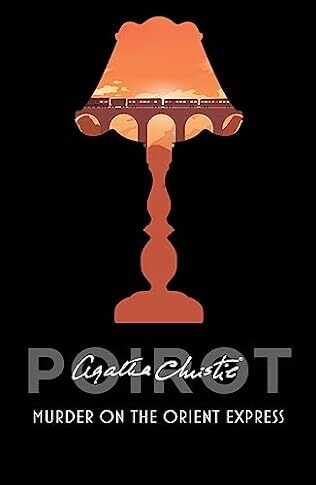Murder On The Orient Express

A review of Murder on the Orient Express by Agatha Christie – 231028
So famous is it that Murder on the Orient Express, originally published in 1934 and the tenth in her Hercule Poirot series that it would not be a pointless answer to the question name a novel by Agatha Christie. Also going by the title Murder in the Calais Coach, it has been the subject of several films, TV and radio adaptations, and a stage play. This was the first time I had actually read the book and it is better than any of the versions I have seen or heard.
It has all the hallmarks of a classic murder mystery story. There is a train which allows for a motley collection of characters to be assembled in one place. There is a snowstorm which blocks the train’s passage which means that there is no escape and no means to summon external assistance. And then there is a locked room murder. The victim, Samuel Ratchett, is found dead in his cabin, having stabbed twelve times, some of the wounds were made with vigour and some feebly done. Dr Constantine, who along with the Director of the Compagnie Internationale de Wagon-Lits, M.Bouc, assists Poirot in the investigation, opines that the murder occurred between midnight and 2 am.
Prior to the murder Ratchett had approached Poirot offering him a large amount of money to find out who was threatening. Not liking the cut of his jib, Poirot refuses. Unusually for the time of year, the Stamboul to Calais carriage of the train is fully booked and it is only through the offices of his good friend, Bouc, that Poirot secures a berth in the carriage. Earlier, Poirot had overheard a conversation between two English people, who are subsequently passengers on the train, in which the phrase “not until it is over” is uttered. All these curiosities in their own way are significant.
Structurally, the book falls into three parts, the facts the evidence gathering, and the deductions. There is little doubt that Christie uses the story to illuminate the brilliance of her eccentric little Belgian with the astonishing little grey cells as he analyses every statement that each of the passengers he interviews, looking for inconsistencies and trying to sort the wheat from the chaff. Some of the conclusions he draws are obvious, some masterly, and others beyond comprehension. Nevertheless, Christie plays reasonably fairly with her reader and most of the clues are there, even if deep mining is required to extract them.
The central section, in which Poirot interviews each passenger in turn and goes over the same ground albeit from different perspectives, could, in other hands, have been a bit of a grind, but Christie brings a light touch to the process which saves it and sucks the reader in to join the sleuth in working out what really went on. There is a filmic quality about the book, particularly this section, which shows why it is an adapter’s favourite.
When it is all boiled down, it is a tale of revenge for a horrendous crime which led directly and indirectly to four deaths. In classic style, Poirot gathers all the parties together and demonstrates his brilliance by working out what went on and offering not one but two solutions. Even then, Christie is not done, introducing an astonishing final twist.
Poirot’s second solution poses a moral dilemma; can a crime be so horrific that it is reasonable for the affected parties to take the law into their own hands? Is there any justification for justice to be done outside of the courtroom? The modern consensus might be no, but this was written at a time when the death penalty was the sentence usually associated with murder. Through Poirot, Christie takes an ambivalent stance to the rule of law, the foundations of a civilised society.
That said, it is a rattling good read and warrants its reputation as one of her best.



